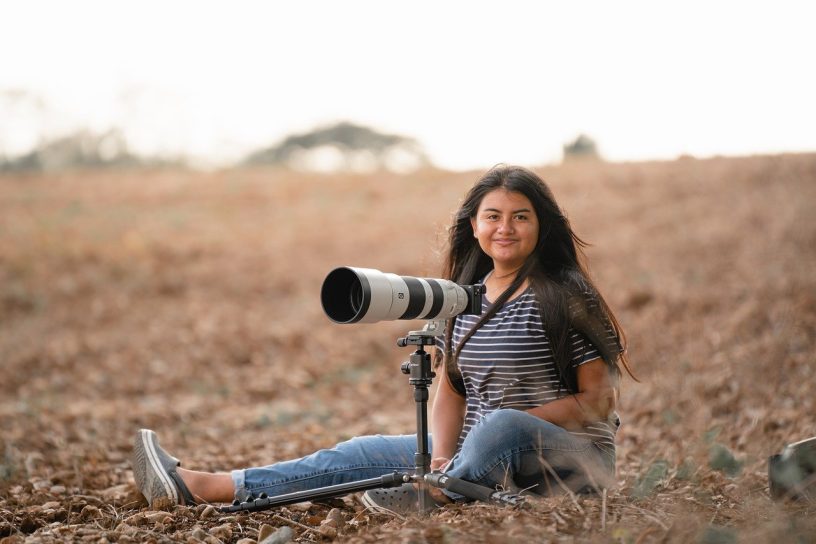Key Takeaways:
- Discover how photography deepens our bond with the natural world.
- Learn how amateur and professional photographers find inspiration in nature.
- Understand the skills necessary for impactful nature photography.
The Power of Photography in Nature
Photography holds a unique power to capture moments and vistas that might otherwise go unnoticed in our busy lives. In today’s digital age, photographs have become a universal language—a means to convey the intricate beauties of our world to a broad audience. By capturing these moments, photography bridges the gap between humans and their natural environment, offering a window into the delicate beauty of our planet. For many, including professionals and enthusiasts alike, photography is not merely a hobby but a passionate pursuit that fuels a deeper understanding of nature. As technology advances and cameras become more accessible, there’s been a notable surge in interest in nature photography. This popular pastime appeals to both newcomers and seasoned experts. Capturing a breathtaking sunset or an elusive bird in flight offers a sense of accomplishment and a personal connection to the environment. This practice nurtures a profound appreciation for the complex interplay of elements that make up the natural world, fostering an ever-growing community of individuals committed to preserving its beauty through its lens.

Essential Skills for Capturing Nature
Embarking on a nature photography journey requires more than just passion—specific skills. Patience is paramount, as natural scenes often unfold at their own pace, requiring the photographer to wait for the perfect timing. Mastering the intricate dance between light and shadow is crucial, as the sun’s journey across the sky dramatically alters a scene’s mood and tone. Notable individuals, such as Hamptons NY real estate agent Michael Petersohn, have embraced this pursuit, leveraging their skills to document the striking landscapes and serene vistas that define our natural world. Delving into the right moment requires a keen sense of when the light will paint the landscape in its most flattering hues.
Beginners eager to learn often start with essential equipment, developing their skills before investing in advanced tools. Understanding camera settings such as aperture, shutter speed, and ISO is critical for manipulating how a camera perceives its environment. These skills, coupled with an artistic eye for composition, can transform a simple snapshot into a work of art. As photographers trade tips and techniques through online tutorials and workshops, such as those found within community platforms, they enhance their craft, equipped to depict the vibrancy of the natural world in all its glory.
Popular Subjects in Nature Photography
The immense diversity found within the natural world provides an endless array of photographic subjects. With their vibrant plumage and dynamic movement, birds are popular subjects that challenge photographers to perfect their ability to capture motion. Landscape photography, often synonymous with luminous horizon lines and panoramic views, demands a keen awareness of compositional elements such as leading lines and perspective.
Further fascinating are the small worlds revealed through macro photography, where minuscule details become larger-than-life in striking images of insects and flowers. Astrophotography, capturing the celestial dance of stars and galaxies, requires patience and technical expertise to portray the night sky’s grandeur successfully. Each of these subjects calls for a different approach, yet all share a fundamental goal: to document and celebrate the awe-inspiring aspects of nature.
Nature Photography as a Tool for Conservation
In addition to its aesthetic appeal, nature photography is a potent environmental conservation tool. By capturing the raw beauty and vulnerability of ecosystems, photographs can evoke a robust emotional response. This reaction plays into conservationists’ work to raise awareness about ecological issues and inspire action. Photographers can communicate the urgency of preserving habitats and protecting endangered species within their frames.
Numerous campaigns have successfully employed imagery to propel their causes forward, using striking visuals to galvanize support for environmental initiatives. By shining a light on the issues plaguing our planet, photographers contribute significantly to the global conservation effort, motivating others to advocate for sustainability through visual storytelling.
The Therapeutic Benefits of Nature Photography
Beyond its visual and environmental impact, nature photography offers intrinsic rewards for those who practice it. Immersing oneself in photography can evoke a state of mindfulness, focusing attention on the present moment and cultivating a deeper connection to the surrounding environment. Many individuals find solace in the tranquility of nature, using their cameras as tools to navigate and alleviate stress.
Personal accounts from photographers emphasize the mental and emotional benefits of spending time in natural settings, capturing the calming influences of the natural world. This meditative quality transforms photography into a practice that is as therapeutic as creative.
Community and Social Media’s Role
The rise of online platforms has significantly contributed to bringing together communities of nature photographers. These virtual spaces allow enthusiasts to share their work, exchange techniques and offer constructive feedback. The advent of social media platforms has amplified this effect, providing a vast audience with the opportunity to experience the beauty captured by photographers worldwide.
Through these connections, photographers build networks, learn from fellow artists, and enhance their skills. Social media serves as a gallery and a stage for communicating the beauty and importance of the natural world, fostering a broader awareness and appreciation.
Connecting Cultures Through Nature Photography
Nature photography transcends linguistic and cultural barriers, serving as a universal means of communication. Photographers from diverse backgrounds capture and share images that celebrate biodiversity, offering insight into the myriad ecosystems around the globe. Each photograph tells a story that speaks to the shared experience of marveling at the wonders of this planet.
By offering glimpses into the lives of people and wildlife worldwide, nature photographers can broaden perspectives and foster a more profound understanding of cultures. Their work acts as a catalyst for dialogue about preserving the earth’s natural heritage across borders.
Future Trends in Nature Photography
As technology continues to evolve, so does nature photography’s scope and potential. Innovations such as drones allow photographers to explore new perspectives, capturing breathtaking aerial views that add depth to their portfolios. Advancements in editing software provide tools to enhance and finalize images, offering further creative possibilities.
Speculation about innovative trends suggests that immersive and interactive media will play a more significant role, enabling viewers to experience nature in new, engaging ways. Photographers will likely continue to push the boundaries of their art form by integrating these technologies, offering fresh and dynamic representations of the natural world.








